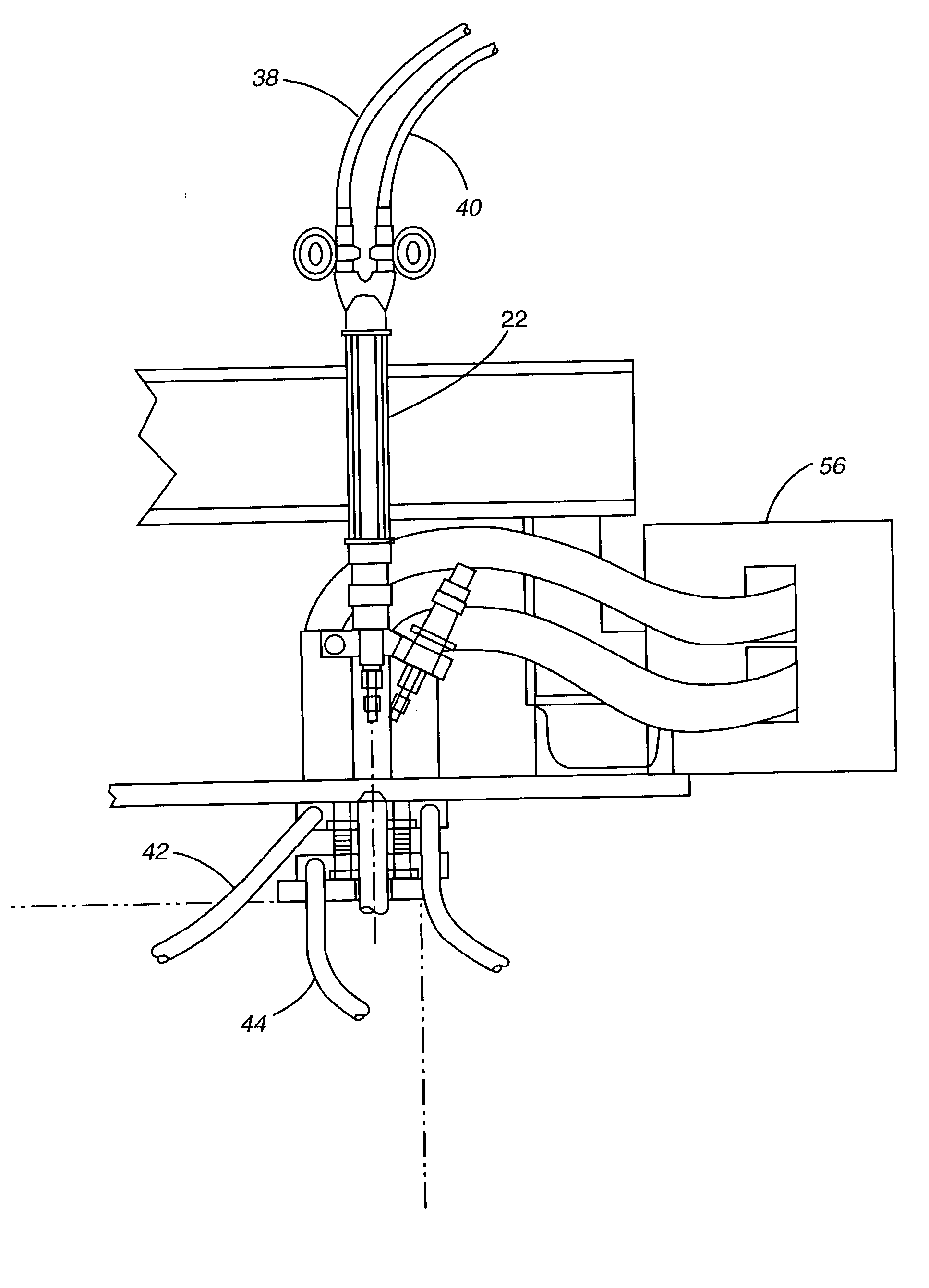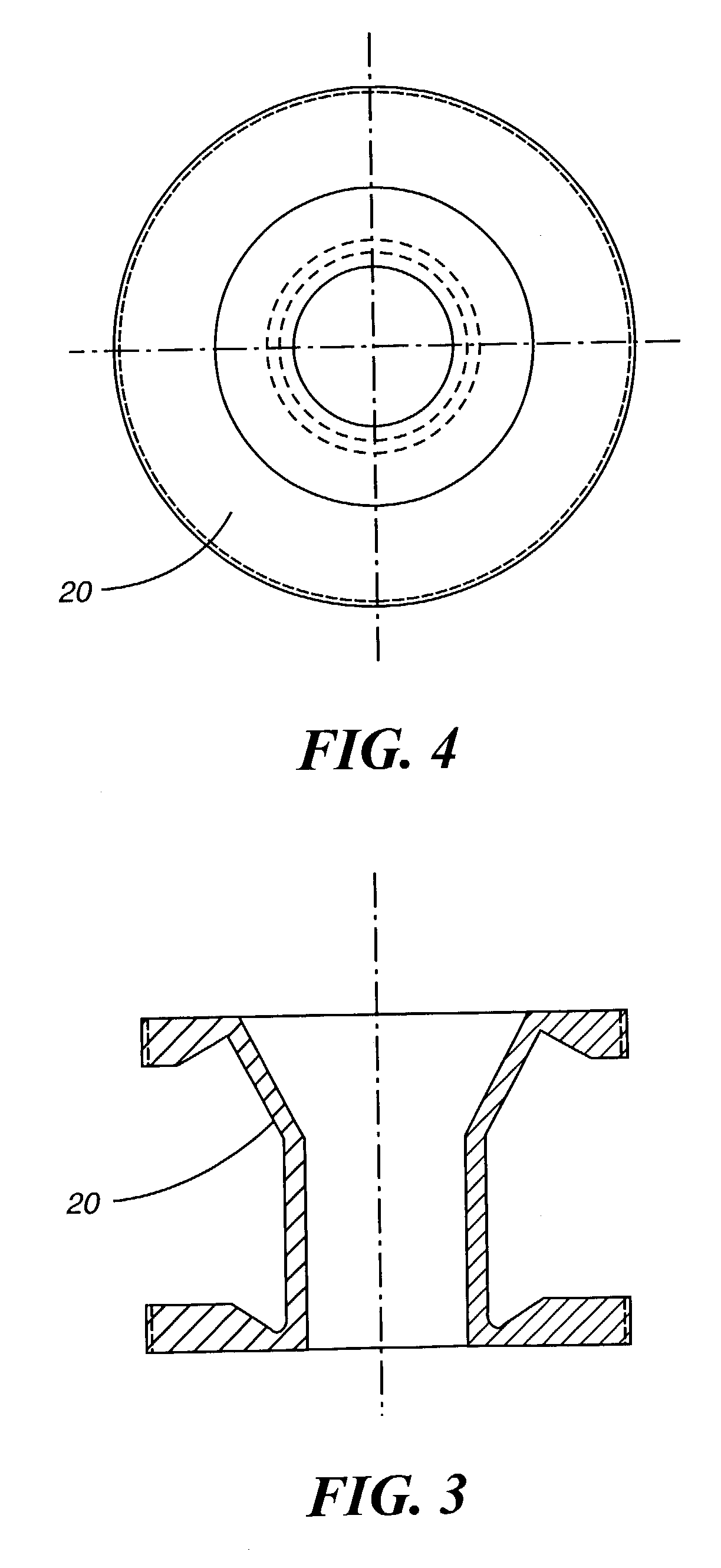Apparatus and method for forming battery terminal posts
a technology of battery terminals and apparatuses, which is applied in the direction of auxillary welding devices, cell components,foundry moulding apparatus, etc., can solve the problems of slow and complicated introduction of lead, no practical way to build up lead from the bottom, and inability to heat molds, etc., to achieve good thermal contact, low thermal mass, and high electrical and thermal resistance
- Summary
- Abstract
- Description
- Claims
- Application Information
AI Technical Summary
Benefits of technology
Problems solved by technology
Method used
Image
Examples
Embodiment Construction
are:
1 Heat Volume of Thermal Conductivity Density Capacity Material Mass BTU / in hr sq. Material lb / cu in BTU / lb F cu in. BTU / F ft. F Titanium 0.164 0.139 0.07 0.0016 119 Inconel 0.3 0.106 0.07 0.0022 103 Nickel 0.322 0.105 0.07 0.0023 639 Iron 0.284 0.108 0.07 0.0021 523 Aluminum 0.097 0.215 0.07 0.00146 1,540 Copper 0.324 0.092 0.07 0.020 2,730 Lead 0.410 0.031 0.30 0.0038* 241 *Thermal mass of post. All other entries are thermal mass of mold in direct contact with the post. Mold volume of material assumes 0.030" mold wall thickness.
[0030] The thermal mass of potential mold materials are similar except for copper, which has an unacceptably high thermal mass.
[0031] Aluminum has a low thermal mass and a very high thermal conductivity, but it could melt if heated to an excessively high temperature.
[0032] The best method of applying heat to the mold is by passing electric current through the mold itself and through the lead. The placement of heat is controlled by varying the wall thick...
PUM
| Property | Measurement | Unit |
|---|---|---|
| thickness | aaaaa | aaaaa |
| electric current | aaaaa | aaaaa |
| melting point | aaaaa | aaaaa |
Abstract
Description
Claims
Application Information
 Login to View More
Login to View More - R&D
- Intellectual Property
- Life Sciences
- Materials
- Tech Scout
- Unparalleled Data Quality
- Higher Quality Content
- 60% Fewer Hallucinations
Browse by: Latest US Patents, China's latest patents, Technical Efficacy Thesaurus, Application Domain, Technology Topic, Popular Technical Reports.
© 2025 PatSnap. All rights reserved.Legal|Privacy policy|Modern Slavery Act Transparency Statement|Sitemap|About US| Contact US: help@patsnap.com



